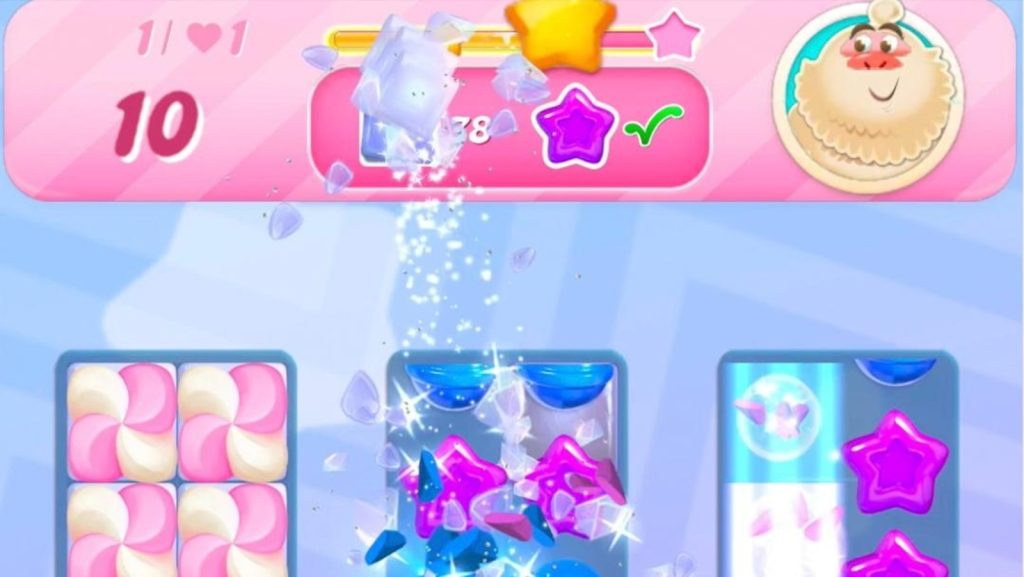LOS ANGELES — Players swiping their way through more than 18,700 levels of Candy Crush Saga might be surprised to learn they’re solving puzzles designed with an assist from artificial intelligence.
The app that helped make gamers out of anyone with a smartphone uses AI to help developers create levels to serve a captive audience constantly looking for more sweets to squash. King, the Swedish video game developer behind Candy Crush, also uses AI to update older levels to help ensure players don’t feel bored, stuck or frustrated as they spend time with the game.
Todd Green, general manager of the Candy Crush franchise, said using AI in that way helps free up developers’ time to create new puzzle boards. It would be “extremely difficult,” he said, for designers to update and reconfigure more than 18,000 levels without AI taking a first pass.
Within the video game industry, discussions around the use of AI in game development run the gamut. Some game makers see AI as a tool that can assist with menial tasks, allowing designers and artists to focus on bigger projects. AI, they say, can help build richer worlds by creating more interactive non-player characters, for example. But there are also those who strongly oppose the use of AI, or who see the tech as a threat to their livelihoods — be it as video game actors and performers, or as workers who help make games. Concerns over AI led game performers with the Screen Actors Guild-American Federation of Television and Radio Artists to go on strike in late July.
“We’re not putting chatbots into the game. We’re not putting AI-powered design experiences into the game for players directly to play with,” Green said, adding that the tech is not being used to replace game workers. “Instead, we’re trying to deploy AI on existing problems that we have in order to make the work of the teams faster or more accurate, and more accurate more quickly.”
In the United States, consumer spending on video game content increased to $51.3 billion in 2024, up from $49.8 billion in 2023, with mobile games accounting for about half of all video game content spending, according to data from the Entertainment Software Association trade group. Mobile is now the leading game platform among players aged 8 and older, the ESA says.
Candy Crush — first launched on Facebook in 2012 — is constantly updating. King recently released its 300th client version of the game. Gaming giant Activision Blizzard acquired King in 2016 for $5.9 billion.
The free-to-play game is in a unique position, said Joost Van Dreunen, author of “One Up: Creativity, Competition, and the Global Business of Video Games.” Candy Crush is more than a decade old, boasts millions of users and caters to a “ravenous set of players,” he said. Demand is so high for new content that it makes sense to use AI to offset the work it takes to create so many levels, Van Dreunen added.
“To supply that at scale, you absolutely can rely on a sort of artificial intelligence or generative AI to create the next set of forms,” he said. “The thing about Candy Crush is that every level is technically a single board that you have to solve or clear before you can advance. With AI and the existing library of human-made boards, it makes total sense to then accelerate and expand the efforts to just create more inventory. People play more levels.”
King uses AI to target two separate areas: developing new levels and going back to older levels, in some cases, puzzles that are several years old, and reworking them to ensure they’re still worth playing. On new levels designed for people who have played the game for a long time, the company wants to ensure the puzzles are fun “on first contact.”
“That’s hard for us to do, because we don’t get the benefit of having many players test or play through the levels and give us feedback. We have to sort of try and pitch it right at first,” he said. “There’s a really important group for us in between people who maybe played before and perhaps took a break for a while, and then coming back because they saw or heard of or were curious about what might be new.”
Green said King uses AI as a behind-the-scenes assistant in the design “loop” of the game, rather than as a tool that immediately puts something new in front of players.
“Doing that for 1,000 levels all at once is very difficult by hand,” he said. “So the most important thing to understand here is that we are using AI as like a custom design.”
For most players, Green said, the fun in solving the puzzles lies in the “up and down.” Levels aren’t designed in order of difficulty. An easy level can follow a few difficult levels — or vice versa — to give the game a sense of variety. Leveraging AI means that instead of the team working on several hundred levels each week, they could potentially improve thousands of levels per week because they’re able to automate the drafting of the improved levels, he added.
“We talk to players all the time,” he said. “We also get the quantitative feedback. We can see how players respond to the levels… How easy are the levels? Do they get sort of stuck, or are they progressing in the way that we hope?”
To determine whether gamers and playing through the way the designers intended, King looks at several factors, including pass rate — how many times a player passes a level out of every 100 attempts — and how often a board is “reshuffled,” or refreshed with all candies rearranged. Some metrics are also intangible, like whether a level is simply fun.
“It’s also, to some extent, obviously subjective,” Green said. “It’s different for different people.”


